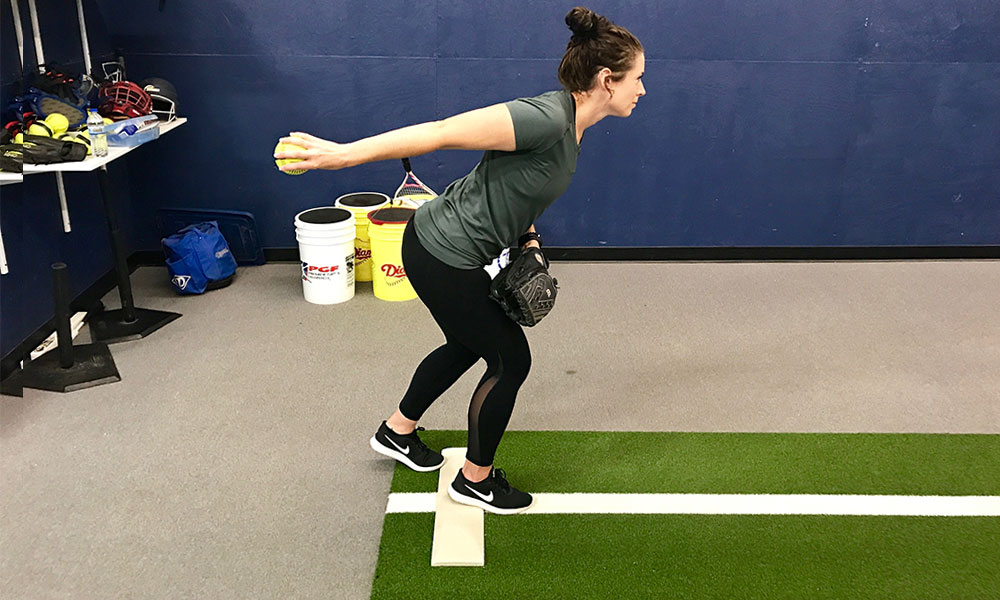How Much Should Pitchers Throw in the Off-Season?

Softball pitching is a unique craft that needs to be continued and maintained with time and practice in the off-season months. Even if the team your pitcher plays on doesn’t do anything together in the off-season months, it’s important that pitchers get reps in. Pitchers can practice off-season pitching in several different ways. One way is individual practices with a catcher or a parent catcher. A second approach is through pitching lessons or pitching camps and clinics. A third way is participating in winter dome ball or outdoor games depending which state the pitcher lives in. Another way is going to a batting cage, grabbing a catcher and teammate who wants to take some swings and throw live at-bats to the hitter- pitching behind a net is recommended.
We have written about it in the past, and we stand behind the phrase, “Champions are made in the off-season.” This saying rings true to all softball players and their positions, especially softball pitchers. The pitchers who put in additional time in the off-season to improve and perfect their craft will be the ones who find success on the mound the following season. Every time players step into a practice setting in the off-season months is going to put them one percentage or step ahead of the competition in the season to come.
So how much should pitchers throw in the off-season? Time and finding a space to throw is going to vary among pitchers, especially those at different age levels. Younger players are likely involved in other winter sports and activities and will pitch less in the winter months. This is more than okay, and we believe it’s important for younger players to have multiple sport and activity outlets while they are young. The older pitchers, at the high school level and those who will go on and play in college, will be expected to throw more in the off-season.
In the off-season months, pitchers should throw at least two to three days a week. Two of those days should be a heavy load while the third day should be designated to breaking down the mechanics and drills for each pitch. The two heavier days should be at least 45 minutes to one hour of pitching and pitchers should throw 80-100 pitches. For those who participate in individual pitching lessons in the off-season, count your one-hour pitching lesson as one of the heavy days. The lighter drill and spin day each week doesn’t need a time cap, just make sure the pitcher feels comfortable and good with her spins and throw 30-40 pitches on these days.
Pitchers should always warm up the same on game days and practice days. It’s important for pitchers to develop a warm-up routine that gets them ready to pitch to the best of their ability. Granted, on game days, the warm-up needs to be shorter than on a practice day. Pitchers have more time on practice days, but the same drills should be completed regardless of a game or practice. Pitchers who warm up the same way every time they touch a softball will develop comfort and trust in their pitching ability, and this will ultimately lead to success.
For those pitchers who will play in winter dome or outdoor leagues in the off-season, the game days will count as a heavy pitching day. Try to get two additional practice days in a week, one being a heavy day and one being a lighter drill and spin day. The drill and spin practices, as well as warm-ups, will be necessary for pitchers who play games in the winter. Games are sometimes setbacks for pitchers in the off-season months as mechanics can get out of whack when the pitcher’s focus is on doing whatever it takes to get the batter out. It is often helpful for pitchers to see live hitters and game situations in the off-season to try out new pitches and to evaluate their progress. Just make sure pitchers who play games in the off-season set aside those critical mechanics and spin practice days as well.
Pitchers who put in the additional time and practice in the off-season will set themselves up for success in the following season. Every pitch in the off-season matters and should be focused on. If pitchers begin to go through the motions during their pitching practices, spice it up a bit. There is always a new drill to be learned, a new pitch to be spun, and don’t forget about pitcher conditioning- this is still a great way to end a pitching practice in the off-season. Now get out there, put in the time, maintain a strong and determined work ethic, and keep in mind that “when you’re not working hard, somebody else is.”





